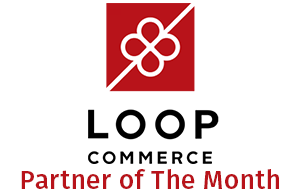
Partner of the Month – Loop Commerce

Every month we like to feature a new partner on our blog as part of our Partner of the Month series. This month, we’re featuring Loop Commerce, a company who has set out to change how we purchase gifts for people online. You may have seen a guest blog post written by Roy Erez, CEO of Loop Commerce. Here is our chance to highlight the company a bit more and let you know what they’re all about. For more information, check out their Website: https://www.loopcommerce.com/.
Loop Commerce is a company that has set out to transform how we give gifts online. Based in Silicon Valley, CA, and backed by top industry executives as well as PayPal, Loop Commerce is changing how retailers approach their top eCommerce pain-points by providing an innovative, patent pending shopping and gifting platform that removes the obstacles consumers face when trying to buy a real physical product as a gift. They were recently selected by Forbes as one of 12 companies “moving global commerce forward”.
Keep an eye out for Loop commerce at the Demandware Xchange conference April 7-9, 2014 in Miami Beach Florida (Join their breakout session on Tuesday April 8th). You can also find them at the Magento Imagine conference this May 12-14th both at their booth as Silver Sponsors as well as during their breakout session. Keep up with the other events you can catch Loop Commerce at on the News and Events page.
For more information about Loop Commerce and their services, check out their website: https://www.loopcommerce.com/
If you’re looking for details on the hottest eCommerce events for 2018, check out this detailed list from Magemail: 10 eCommerce Events You Need To Check Out In 2018!






Recent Comments